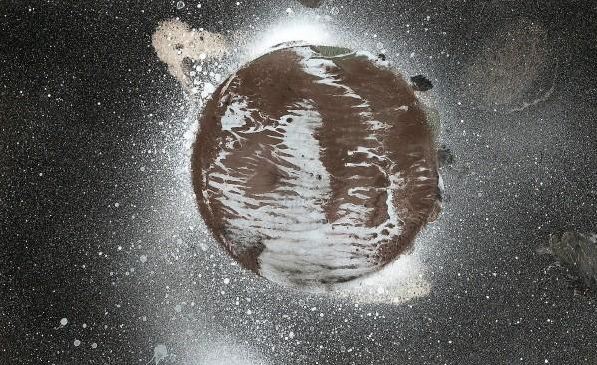A Dusty Breakthrough That Could Power Future Space Colonies
Astronauts may no longer need to carry solar panels into space. Instead, they could build them directly on the Moon—using nothing more than dust and sunlight.
Researchers from the University of Potsdam in Germany have successfully created solar cells from simulated lunar regolith, the rocky, dusty surface material that covers the Moon. Their work hints at a revolutionary shift in space technology: powering future Moon bases without needing Earth-made hardware.
Why Build Solar Panels on the Moon?
The problem with space solar power has always been logistics. Launching a full solar array from Earth is:
-
Expensive ($1.2 million per kilogram to the Moon)
-
Heavy
-
Risky in terms of fragility and damage during transit
Current solar cells used in orbit can reach up to 40% efficiency, but they’re also extremely costly and glass-heavy. Dr. Felix Lang and his team believe there’s a better way.
How It Works: From Moon Dust to Energy
The team simulated conditions on the Moon by using moondust analogs to create moonglass, a brown-tinted glass formed by melting regolith with concentrated sunlight.
That moonglass was then layered with perovskite—a low-cost, light-absorbing material considered the next-generation solution for solar power.
The result? Lightweight, radiation-resistant, and scalable solar cells that don’t need to be shipped into space.
Key Advantages Over Earth-Based Panels
-
99.4% reduction in launch mass
-
Up to 99% lower costs
-
Superior radiation resistance
-
No need for glass transported from Earth
-
Manufactured with local Moon materials
Instead of chasing ultra-efficiency, Lang’s team emphasizes scalability. On the Moon, building more panels is cheaper than optimizing each panel to perfection.
“Our cells are more stable against radiation. The natural tint of moonglass makes them more durable than Earth-made glass,” says Dr. Lang.
What’s the Catch?
There are still technical hurdles:
-
Moon’s gravity and vacuum conditions may affect how materials behave
-
Perovskite processing currently requires Earth-like atmospheric conditions
-
Automation will be critical—no one wants to hand-make glass in a spacesuit
But researchers say none of these are insurmountable. In fact, these early-stage successes show the Moon isn’t just a destination—it’s a power plant in waiting.
Strategic Implications: Space Settlements, Mars Missions, and Energy Independence
The findings come as global space agencies and private firms (NASA, ESA, SpaceX) eye permanent lunar installations under projects like Artemis.
With local solar production:
-
Moon bases can be built faster and cheaper
-
Long-duration missions become energy independent
-
Future Mars and asteroid settlements could adopt similar models
Frequently Asked Questions
Q: What is lunar regolith?
A: The loose, dusty rock layer covering the Moon’s surface, made of crushed basalt, silica, and metallic particles.
Q: Why is perovskite used?
A: It’s cheap, lightweight, and effective at converting solar energy—even under harsh conditions.
Q: How durable are moonglass panels?
A: In lab tests, they outperformed standard Earth-made solar panels under radiation, maintaining clarity and efficiency.
Q: When could this be deployed?
A: Within the next decade, as robotic and human missions expand lunar infrastructure and in-situ production.
TL;DR
We may no longer need to launch solar panels into space. Thanks to new research, the Moon’s own dust can be turned into durable, efficient solar panels—cutting costs and enabling real lunar living.













Leave a Reply